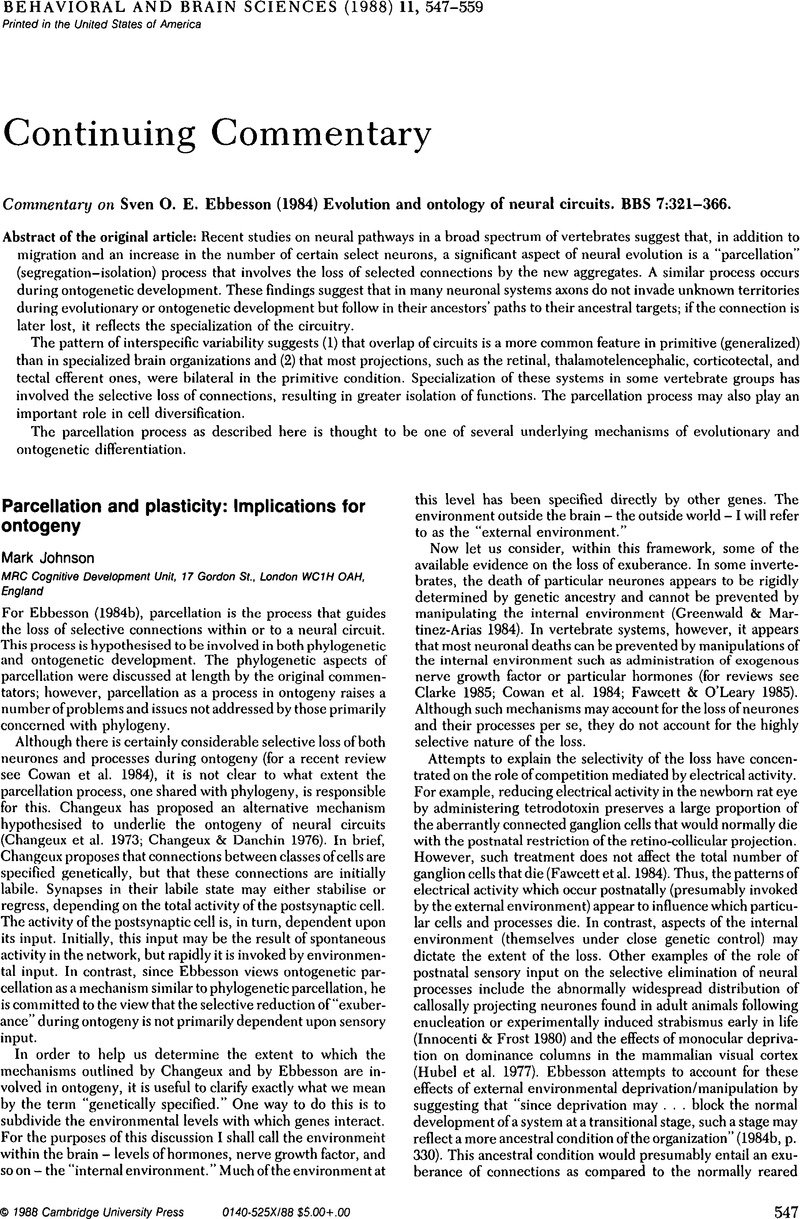Crossref Citations
This article has been cited by the following publications. This list is generated based on data provided by Crossref.
Johnson, Mark H.
and
Karmiloff-Smith, Annette
1992.
Can neural selectionism be applied to cognitive development and its disorders?.
New Ideas in Psychology,
Vol. 10,
Issue. 1,
p.
35.
Giovanelli, Giuliana
Sansavini, Alessandra
and
Farneti, Alessandra
1999.
Current Issues in Developmental Psychology.
p.
137.



